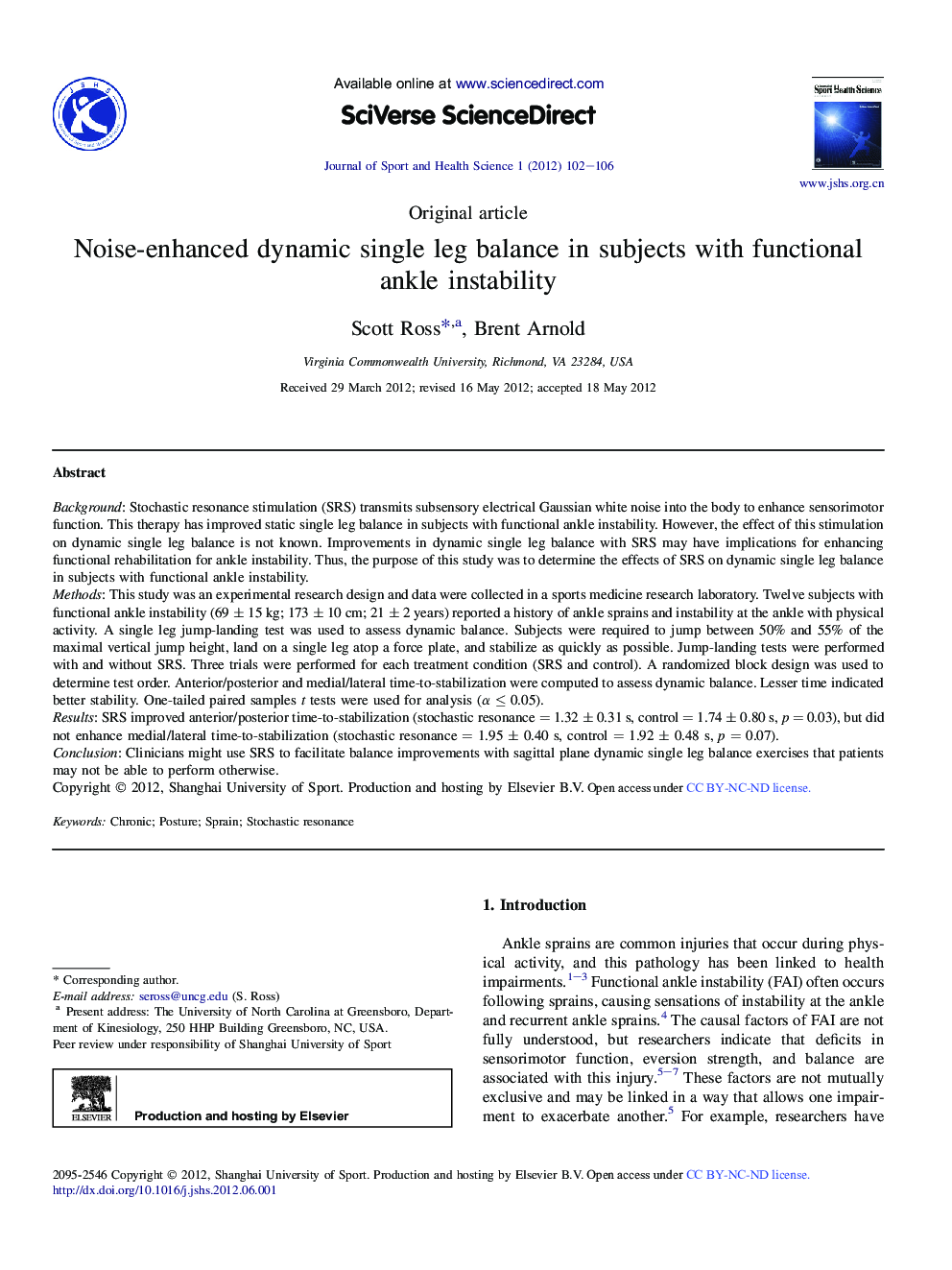| کد مقاله | کد نشریه | سال انتشار | مقاله انگلیسی | نسخه تمام متن |
|---|---|---|---|---|
| 1084308 | 951271 | 2012 | 5 صفحه PDF | دانلود رایگان |

BackgroundStochastic resonance stimulation (SRS) transmits subsensory electrical Gaussian white noise into the body to enhance sensorimotor function. This therapy has improved static single leg balance in subjects with functional ankle instability. However, the effect of this stimulation on dynamic single leg balance is not known. Improvements in dynamic single leg balance with SRS may have implications for enhancing functional rehabilitation for ankle instability. Thus, the purpose of this study was to determine the effects of SRS on dynamic single leg balance in subjects with functional ankle instability.MethodsThis study was an experimental research design and data were collected in a sports medicine research laboratory. Twelve subjects with functional ankle instability (69 ± 15 kg; 173 ± 10 cm; 21 ± 2 years) reported a history of ankle sprains and instability at the ankle with physical activity. A single leg jump-landing test was used to assess dynamic balance. Subjects were required to jump between 50% and 55% of the maximal vertical jump height, land on a single leg atop a force plate, and stabilize as quickly as possible. Jump-landing tests were performed with and without SRS. Three trials were performed for each treatment condition (SRS and control). A randomized block design was used to determine test order. Anterior/posterior and medial/lateral time-to-stabilization were computed to assess dynamic balance. Lesser time indicated better stability. One-tailed paired samples t tests were used for analysis (α ≤ 0.05).ResultsSRS improved anterior/posterior time-to-stabilization (stochastic resonance = 1.32 ± 0.31 s, control = 1.74 ± 0.80 s, p = 0.03), but did not enhance medial/lateral time-to-stabilization (stochastic resonance = 1.95 ± 0.40 s, control = 1.92 ± 0.48 s, p = 0.07).ConclusionClinicians might use SRS to facilitate balance improvements with sagittal plane dynamic single leg balance exercises that patients may not be able to perform otherwise.
Journal: Journal of Sport and Health Science - Volume 1, Issue 2, September 2012, Pages 102–106